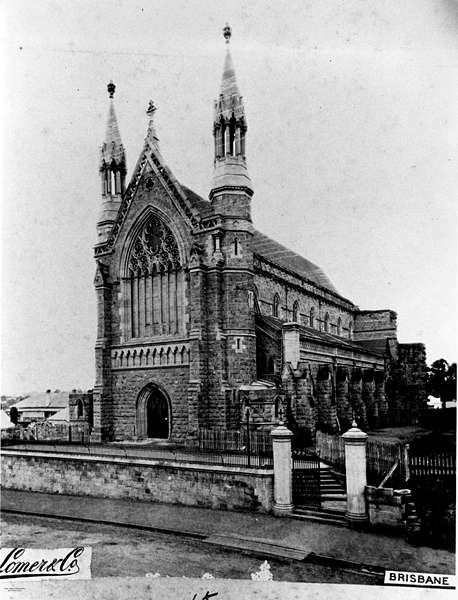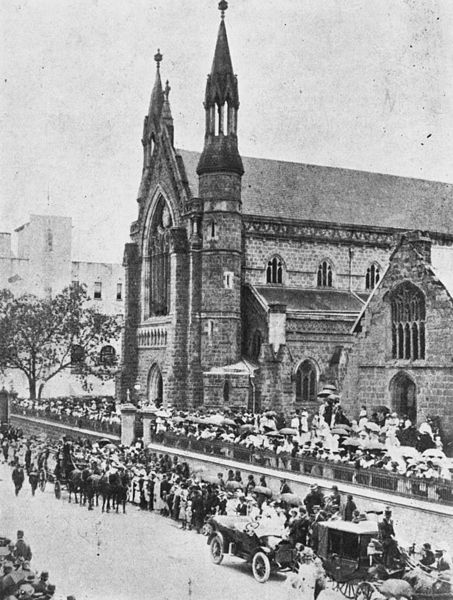St Stephen's Cathedral
See Also:
|
Building a cathedral often takes centuries. In addition, the great cathedrals of the world rarely follow a single style. They bear the marks of every century as people added, embellished or replaced part of the cathedral in their own style. The changes of style themselves are witness to a living tradition of faith in that place.
Bishop Quinn, the first bishop of the diocese, laid the foundation stone of the cathedral on the feast of St Stephen, 26 December 1863. A larger and more ornate church was envisaged than the present one but the economic depression of the mid-1860s resulted in only part of the original foundations being laid. Using the existing foundations, work was re-commenced early in 1870. On Sunday, 17 May 1874, the still-incomplete cathedral was solemnly blessed and dedicated. It covered about a third of the area of the one first planned. During the time of Archbishop Robert Dunne the top of the gable and the spires were added to the Elizabeth Street facade in 1884. Next the cathedral was enriched with stained glass and marble. On 3 October 1920, Archbishop James Duhig laid the foundation stone of new transepts. He had already announced plans to build a massive Renaissance cathedral in Ann Street, Fortitude Valley. The foundation stones of a cathedral dedicated to the Holy Name of Jesus were laid in a splendid ceremony on Sunday, 16 September, 1928 before a crowd of 35,000 people. These foundation stones are now located at the join between the 1921-22 extension and that of 1988-89. Under Archbishop Patrick O’Donnell, temporary solutions were found to the difficulties of celebrating a rapidly changing liturgy in a traditional liturgical space. Archbishop Francis Rush undertook the complete restoration, renovation and extension of the Cathedral during the 1980s, culminating in its dedication on 4 December 1989. Archbishop John Bathersby blessed the Jubilee Pipe Organ on 29 October 2000. He also authorised the restoration of St Stephen’s Chapel in which a diocesan shrine to Mary Mackillop was established. Works of Art
|



